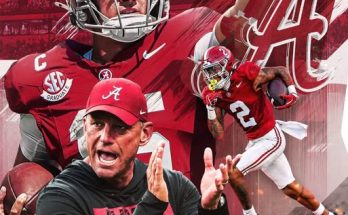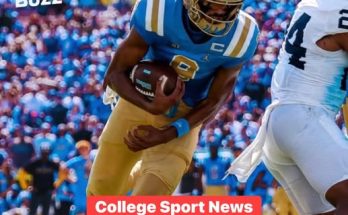Breaking News: Greatest Lion of All Time
In a world where the majesty of wildlife captivates the human imagination, few creatures have stirred as much awe and reverence as the lion. Known as the “King of the Beasts,” lions have symbolized courage, royalty, and raw power across cultures and centuries. But among these majestic felines, one lion has now emerged to claim the title of the greatest of all time—a legend whose legacy will echo through the savannahs long after his final roar. Today, we bring you the extraordinary story of the lion who earned the title of the greatest lion of all time.
The tale of this unparalleled lion begins in the heart of the African wilderness, where the rhythms of nature have shaped the destinies of countless generations. Born under the sweltering sun of the Serengeti, this lion was part of a pride already known for its formidable size and dominance. But even as a cub, he stood apart—larger, more alert, with eyes that gleamed with uncanny intelligence and a presence that seemed to foretell greatness. His early days were marked by challenges that would have crushed lesser lions: brutal droughts, rival predators, and territorial skirmishes. Yet he survived, and not just by luck—his survival was fueled by a combination of fierce instinct, tactical cunning, and a will to lead.
As he matured, his strength grew exponentially. By the age of four, he had already taken down adult buffalo single-handedly—a rare feat that quickly became legendary among local guides and researchers. He was soon challenging older males, and not just for dominance, but for the very future of the pride. His mane, thick and dark, was already a signal to rivals and females alike: here was a lion destined for greatness.
His ascent to dominance was not merely physical. This lion displayed a strategic brilliance that set him apart from all others. He knew when to fight and when to wait, when to press an advantage and when to retreat. He learned the terrain like a master tactician, using hills, trees, and rivers to trap prey or avoid unnecessary confrontations. His ability to lead was equally unmatched. Under his rule, his pride flourished—boasting high cub survival rates, increased territory, and a level of social cohesion rarely observed among wild lions. Researchers tracking his movements were astonished by the cooperation he inspired, even among typically aloof pride males.
Perhaps the most incredible part of his legacy lies in the way he reshaped the ecological dynamics of his environment. By expanding his territory and keeping rival coalitions at bay, he indirectly protected smaller species often disrupted by the constant shifts in lion territories. He also kept the hyena population in check, ensuring balance in the predator-prey chain. His impact extended beyond his pride to the entire ecosystem, a testament to the power and influence of a truly dominant apex predator.
What cemented his status as the greatest of all time, however, was not just what he did in his prime, but how long he remained at the top. In the wild, male lions typically rule for two to four years before being challenged and ousted by younger, stronger rivals. This lion held dominion for more than a decade. That in itself is unprecedented. His endurance defied every known statistic, baffling biologists and conservationists. Even as he aged, his mane graying and gait slowing, he retained command—not through brute strength, but through unmatched wisdom and reputation. Younger males, despite their physical edge, often chose to form coalitions elsewhere rather than risk a confrontation with the lion whose name had become legend.
Documentarians and wildlife photographers traveled from across the globe to catch a glimpse of him. His likeness became iconic: regal posture, a scarred face bearing the stories of countless battles, and a mane like storm clouds rolling over the plains. Every sighting was a moment of wonder, every roar a reminder of nature’s untamed grandeur. Local communities who lived alongside the reserve where he reigned often told stories of his spirit, attributing him with near-mythical powers. To many, he wasn’t just a lion; he was a force of nature, an embodiment of everything wild and enduring.
His death, when it finally came, was as monumental as his life. He passed not in the violent frenzy of a takeover or under the claws of rivals, but quietly, under the shade of a lone acacia, surrounded by the pride he had led for years. His final days were marked by stillness, his presence now more symbolic than physical. And when he breathed his last, the landscape seemed to fall into an almost reverent silence. Researchers observed the pride gathering near his resting place, a rare moment of apparent mourning that only deepened the sense of loss. Tributes poured in from conservation groups, filmmakers, and even government officials, recognizing that the world had lost more than an animal—it had lost a legend.
In the months following his death, his story spread far beyond the savannah. Documentaries dedicated entire episodes to his life. Scientific journals analyzed his behavioral patterns and genetic legacy. Children learned about him in classrooms, and his image was etched onto conservation banners as a symbol of hope and resilience. But more importantly, his life inspired a new wave of interest in lion conservation. Donations to wildlife reserves surged. Political will to protect natural habitats grew. His legend had sparked a movement.
What truly separates this lion from every other contender to the title of “greatest of all time” is not merely his size, strength, or reign—but the sum of his qualities, the ripple effects of his life, and the inspiration he gave to both his species and ours. In him, we saw the very essence of what makes lions such enduring symbols: leadership, courage, resilience, and grace under pressure. He reminded us why these animals matter—not just in ecological terms, but in the grander narrative of life on Earth. His story is not just about a lion. It’s about legacy.
As his offspring begin to carve out their own paths in the wild, biologists and observers are keeping a close watch. Already, signs of his influence are apparent—cubs showing early signs of dominance, young males adapting his unique tactics, and females forming tighter social units. It’s clear that his bloodline will continue to shape the future of lions in the region for years to come. But even if none match his unparalleled reign, the mark he left will remain indelible.
In the annals of wildlife history, there have been many lions who stood out—Cecil, Scarface, Notch—but none quite like this one. He was not just the king of his pride. He was the king of kings. His reign was not measured in years alone, but in the lives he touched, the balance he maintained, and the stories he left behind. And though he is gone, his legacy roars on, louder and more powerful than ever.
The world may never see another like him. But in every lion’s roar across the plains, in every cub that learns to hunt, and in every sunrise over the grasslands, there is a flicker of his spirit—a reminder that once, the greatest lion of all time walked this Earth, and we were lucky enough to witness his reign.



